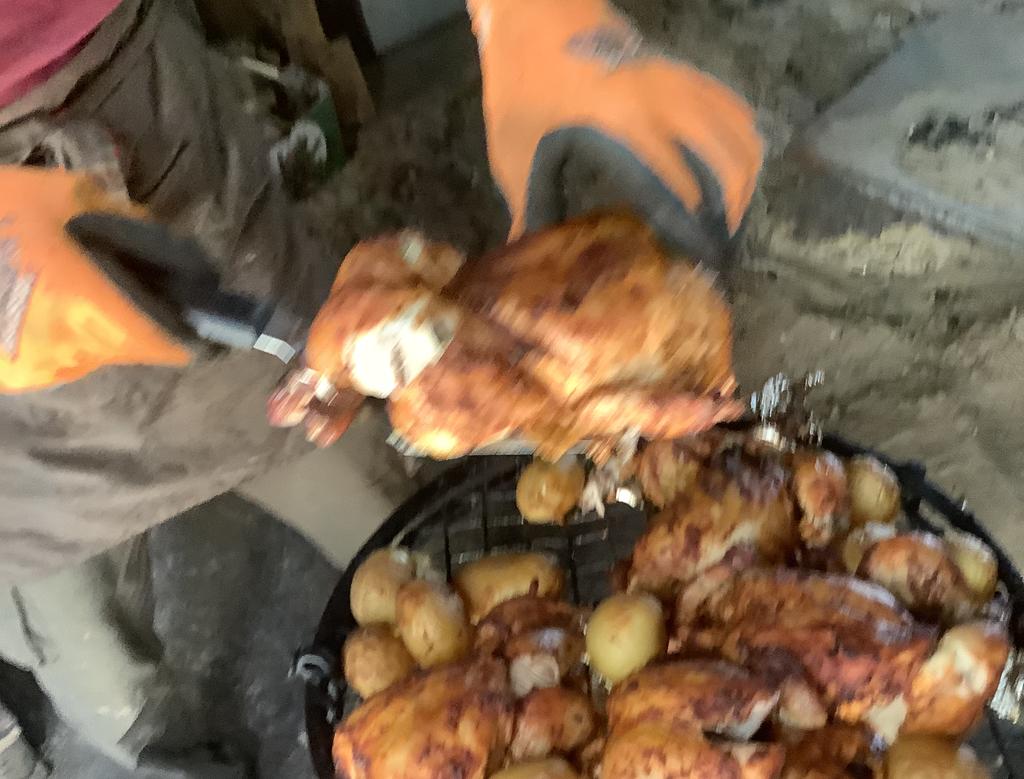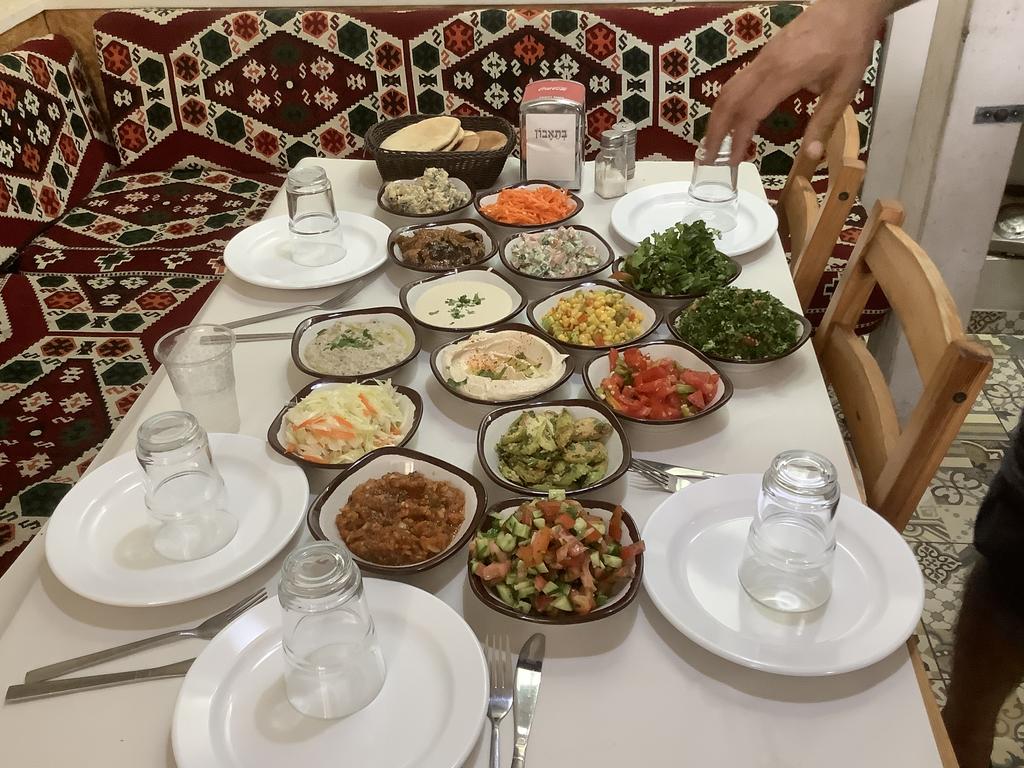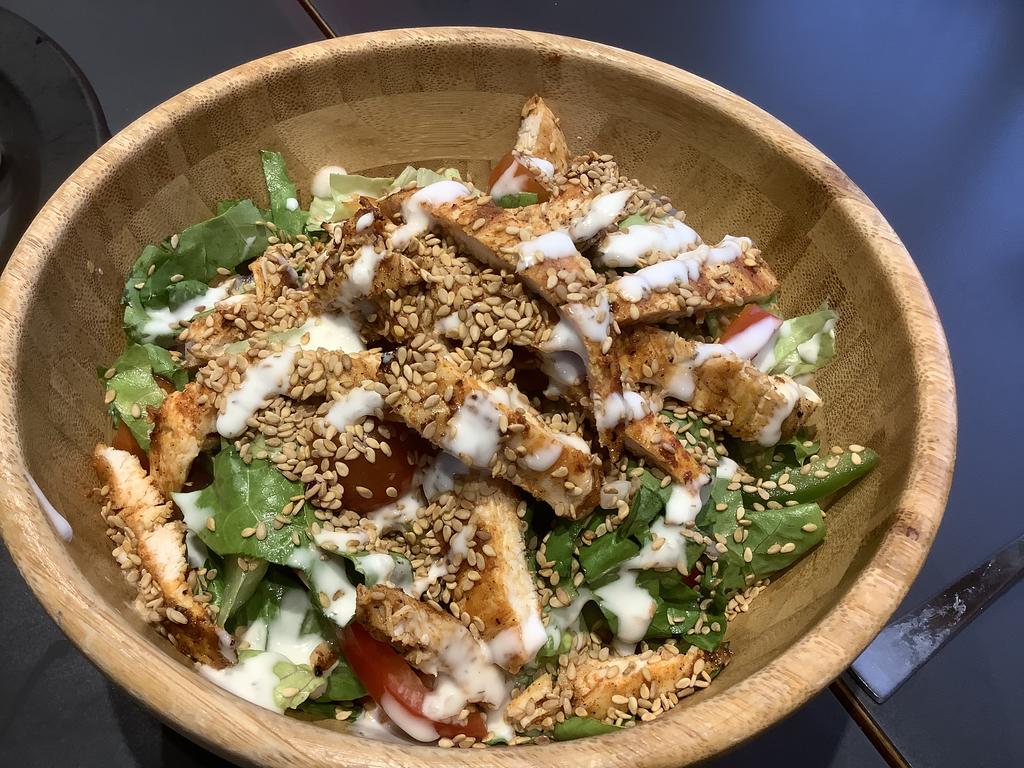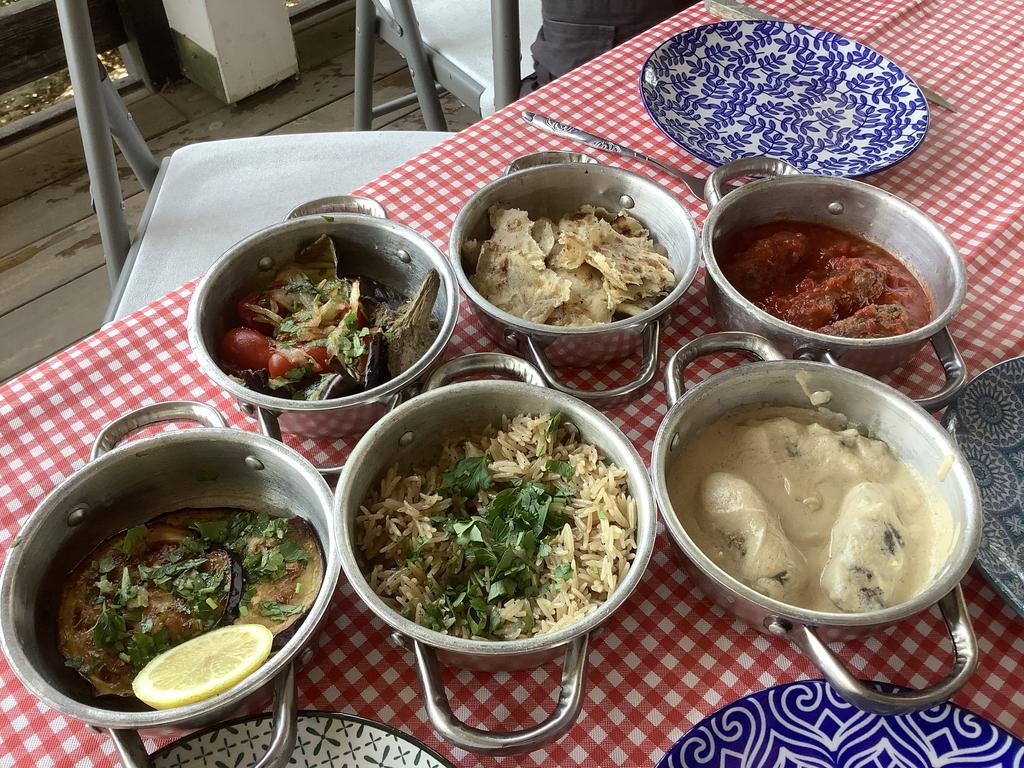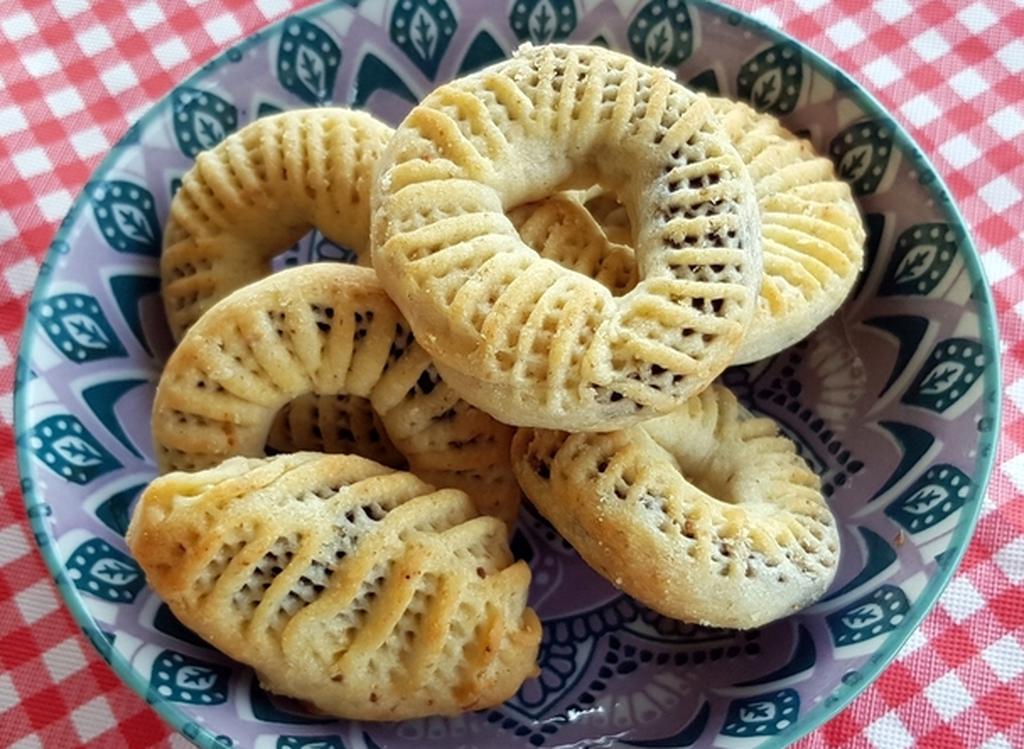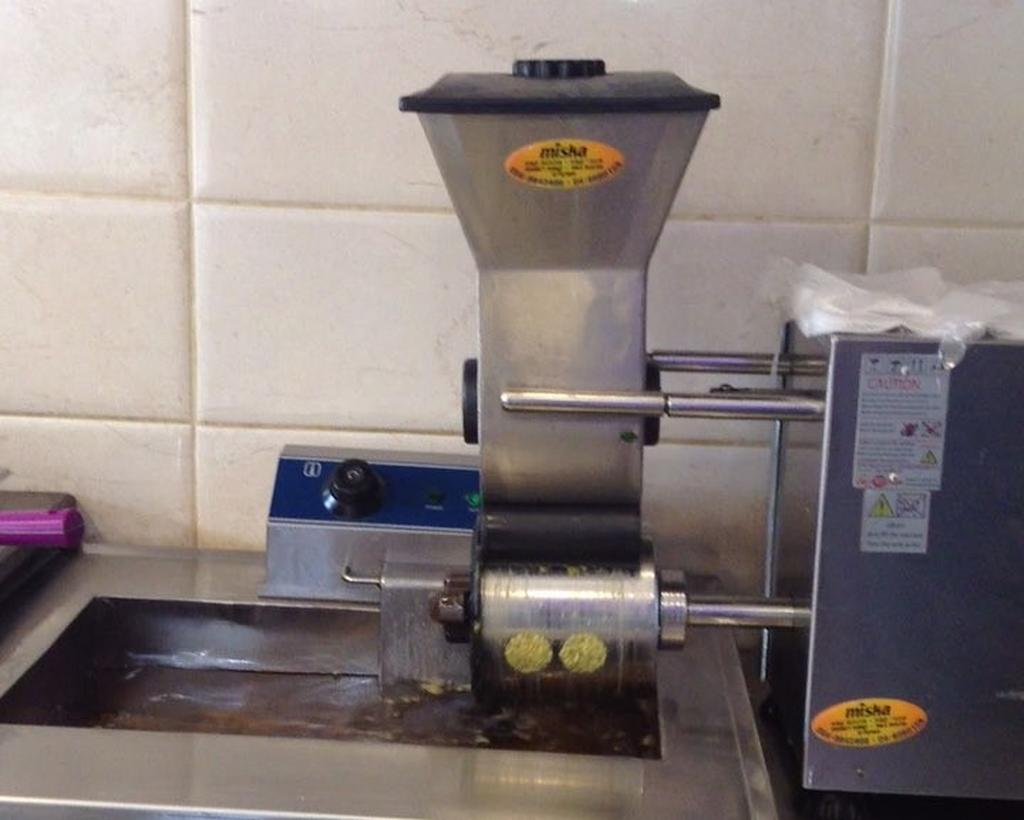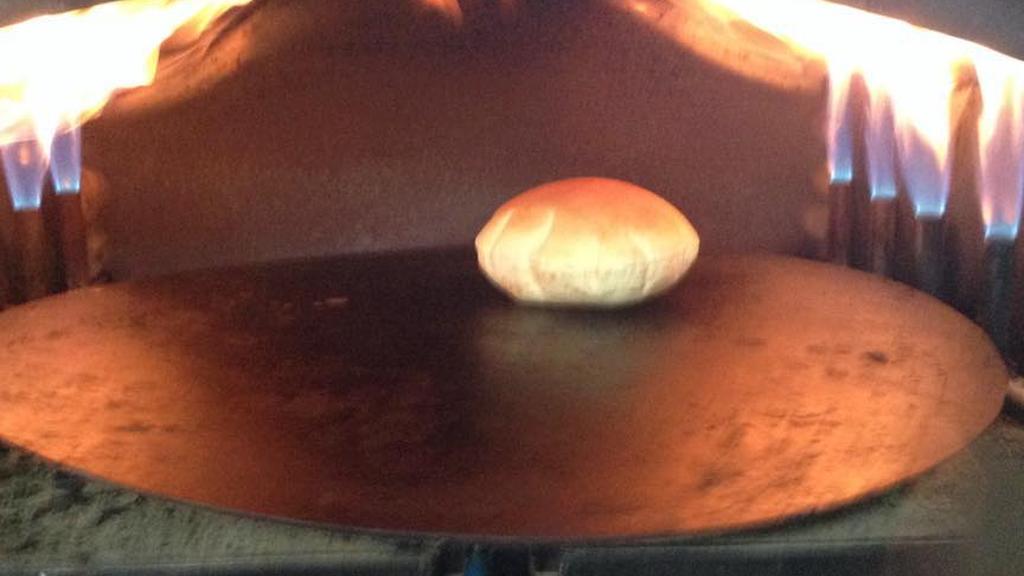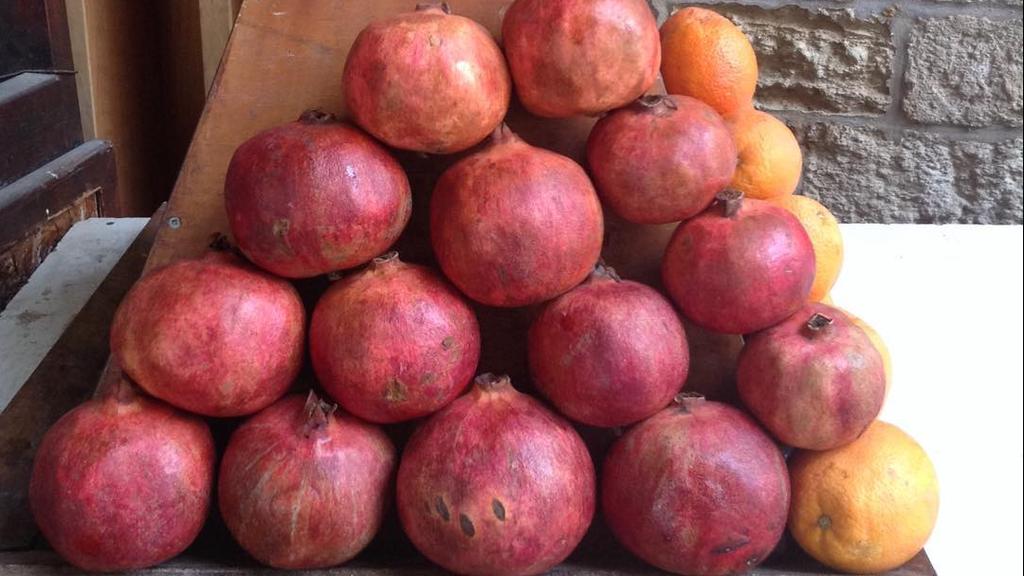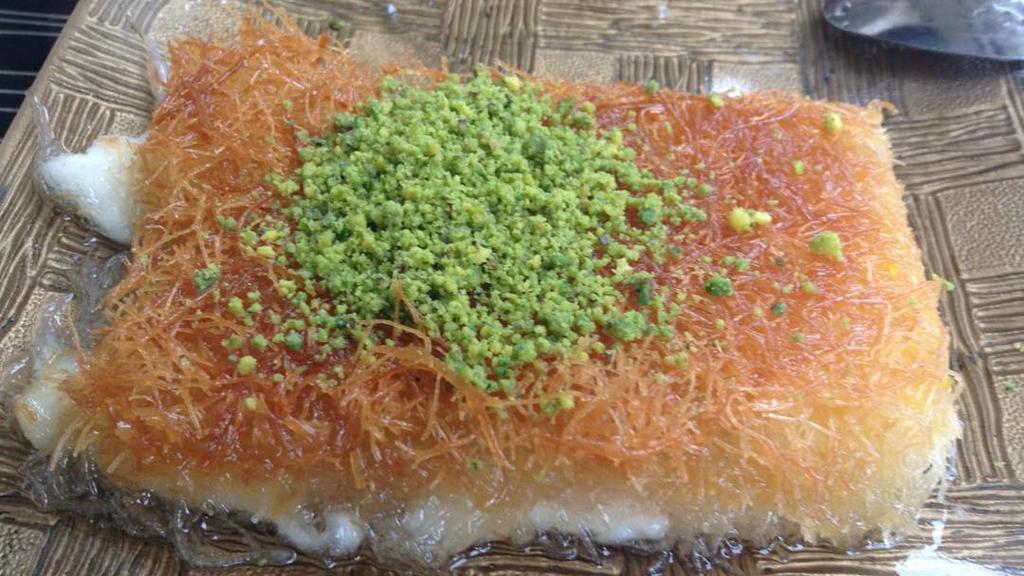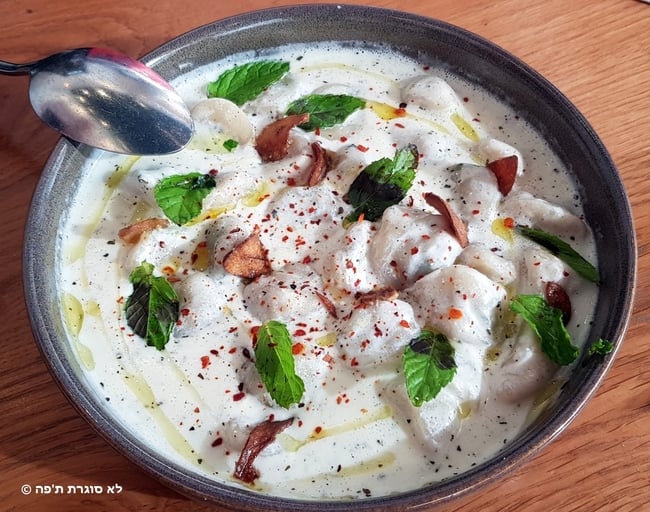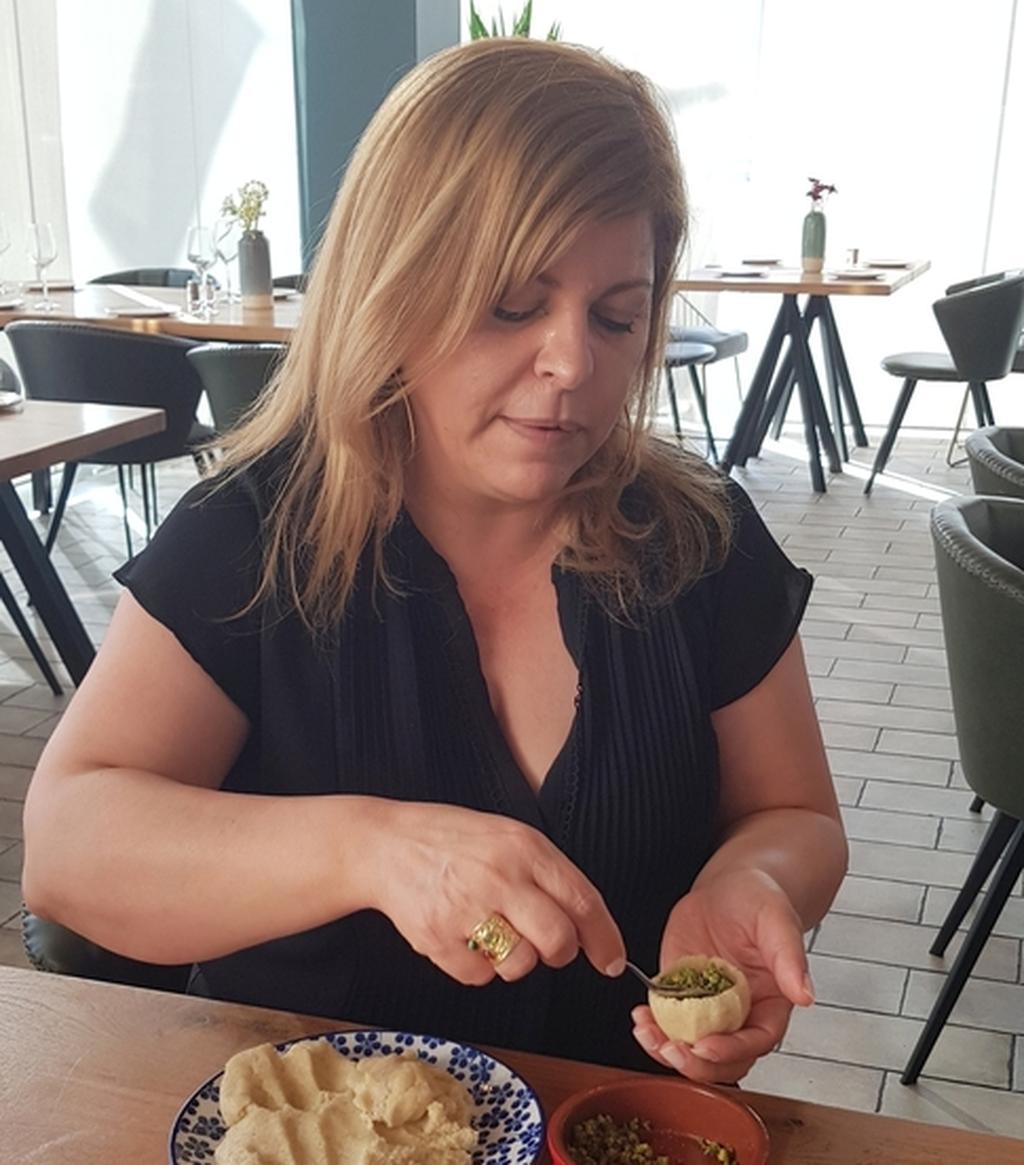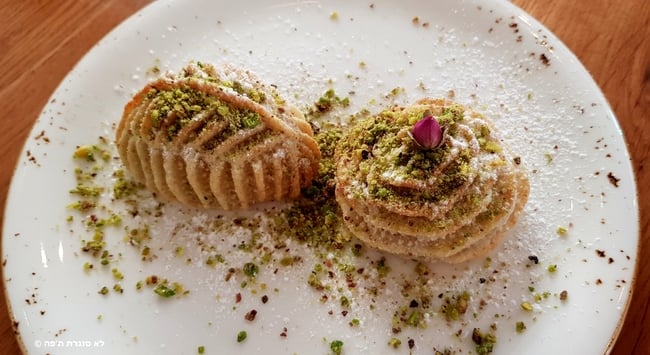Recently, I had the opportunity to travel for two days in the central and eastern Galilee, snacking my way through rolling hill country.
My Emek Yizra'el culinary tour was sponsored by a local PR firm, whose principal met us at Coffee Station opposite Moshav Kfar Yehoshua, a good place to stretch our legs while enjoying hot or cold coffee after our drive. Locals like to snack on its bagel panini, or jachnun on Saturday.
But the tourist attraction here is Beit Hasodot, the historic preserved Hijazi train station. Trains do not run here anymore, and Covid 19 is playing havoc with visiting schedules, but the old stone building with plaques is worth a peek.
Our first meal stop was at Taboun Fatma in Zarzir, where the draw is the traditional way of preparing classic Arabic dishes. As soon as we arrived, we were ushered to a shed in the rear, where a worker quickly began digging into the earth.
Soon enough, there emerged from a pit in the ground - after four hours amid smoldering embers - metal racks loaded with golden chicken and freshly baked potatoes. We then sat down to a feast of 15 mezze, with steaming hot chicken, potatoes, rice, freekeh and stuffed vegetables.
Unfortunately, our host was the first to admit that the food that day was not up to its usual standard, but a couple of judicial squirts of lemon helped perk up what was not adequately seasoned. And everything was washed down with refreshingly sweet, freshly squeezed pomegranate juice.
Just a short drive away, in Givat Ela, we popped into Starling American diner, a very different fast food joint from the run-of-the-mill chains.
I would not drive from the center of the country to the north for hamburgers or non-ethnic food, but if you have kids or people who are not adventurous eaters, the freshly ground burgers from prime beef are tasty, juicy and a cut above the norm.
The chicken tortilla and sesame chicken strips salad are also worthy of mention.
Sometimes, the cook/hostess is as important as the meal, and that was indeed the case at our next stop. We were on the spacious porch of a multi-story villa back in Zarzir, at the home of Galila (pronounced Jalila) Mazareb, the representative on our trip of the Bedouin community in the Galilee, which we learned numbers some 100,000 Israelis scattered in 24 cities.
Throughout the meals she hosts by reservation only for private parties, she weaves a fascinating narrative - in Hebrew and English - with facts and tales about Israel’s Bedouin population.
We discovered, for example, that traditions - and even dialects - of Galilee and Negev Bedouins are actually quite different, including choices - and even numbers - of wives. And that the Galilee Bedouin identify as Arabs, then either Muslims and Christians, and finally, Israelis - since most serve in the IDF.
Who they are not is Palestinian, since, as Galila points out, the whole concept of Palestine dates only from the last century. She also charts the community’s progress in recent years: in the 1970s, the transition to permanent houses from nomadism, and in the 1980s, starting to sending the children to school.
The food here is the closest to home cooking during our extended tour.
According to Galila, the culinary story of the Bedouin is rooted in local herbs and meat. The uncomplicated food we enjoyed featured meat with yogurt and ma’amul cookies filled with dates and clove. Interestingly, the kitchen here is kosher, so she can host diverse segments of the Israeli population.
Of course, one can’t spend an entire day just eating; and although we did not get there, nearby attractions include The Spice Way Herb and Spice Farm in Beit Lehem Haglilit, plus escaping into nature at Alonei Abba Reserve and the Ma’ayan Ro’ee spring near Kiryat Tivon.
For our final treat, we went to Aglida Italian ice cream in Ramat Yishai. With such exotic and creative flavors as bamba, pretzel, lotus cheesecake, and salted caramel, this was a delicious finale to a great day of gastronomic discovery.
Nazareth - the culinary capital of Israeli Arab cuisine
The following day, after a restful night at the luxurious Ruth Hotel in Zfat, we set out for the culinary capital of Arab cuisine in the Galilee, the holy city of Nazareth.
We knew from the outset that our primary stop was going to be an early dinner at Luna Arabic bistro, so we deliberately planned a long walking tour with very few tasting breaks.
Our guide for the day was Tareq, who works in tourism promotion for the municipality. He is a familiar face around town, having to stop frequently to exchange pleasantries with the locals.
The street of one the city’s major attractions, Mary’s Well, has undergone gentrification, now boasting a row of modern eateries. One is a handsome coffee shop/restaurant, where we enjoyed excellent cappuccino.
A few doors down, we stopped into the street’s falafel joint, Falafel HaMa’ayan, where the owner proudly showed off his automatic frying machine.
The resulting fresh, crispy falafel balls were outstanding.
We then meandered through the outdoor shuk -- food and produce market -- where we stopped at Al Badawi Bakery and Juice Bar for piping hot pitot from the taboun, washed down by freshly squeezed pomegranate juice.
El Babour, meanwhile, is one of the city’s premier spice emporiums, where they blend and grind proprietary mixtures you will find nowhere else.
Master blender Tony Kanaza has devised some unique takes on za’atar and even invented new creations, such as Pierina spice, comprising no fewer than 12 different international spices, in addition to unspecified herbs from the Galilee.
No culinary visit to Nazareth would be complete without entering Mahroum sweets, one of the city’s most popular bakers and purveyors of Arabic pastries. The classic baklawa is a must, as is taking home a tin of the store’s greatest hits, including the kanaffeh.
Finally, we drove out to Luna Arabic Bistro, located in a large shopping mall. Chef Luna Zreik never formally trained in the culinary arts, but this did not impede her near-meteoric rise in the restaurant world.
The restaurant proudly displays its certificate attesting to its Time Out Magazine’s Eating and Drinking Awards’ 101 Best Places to Eat in Israel (2019).
We enjoyed a leisurely, two-hour meal with Chef Luna guiding us through a tasting menu.
The dishes we can recommend from most categories of the extensive bilingual menu include:
Appetizers (“Tasting Nazareth”): Olesh, a local green topped here with french-fried onions; Babaganoush with a twist, garnished with croutons and garlic labaneh; and fried cauliflower on garlic labaneh, sweetened with honey and pomegranate concentrate. These were accompanied by pale white cloud pitas, and piping hot Zaatar cheese rolls.
Salad: Luna salad, whose basic green was fresh cilantro (coriander) stalks, tossed with red cabbage and colorful balls of Nazareth labaneh seasoned with pistachio, mint and sumac.
The entire pleasant mix was enhanced by slivered almonds for a bit of welcome crunch, and a light dressing sweetened ever so slightly with honey and pomegranate concentrate.
Intermediate dish: Shishbarak, the Arab variant of tortellini. The version here was stuffed with kabab, while the pasta pockets floated in a perfectly seasoned sauce of yogurt laced with olive oil and garnished with mint leaves.
Main course: Al-Ma-ashuka - a dish with origins in medieval Syrian cuisine - comprising meatballs seasoned with caramelized onion, ginger, dates and rosewater.
Dessert: Ushta, a mound of rich yet chiffony clotted cream, drizzled with an addictive orange marmalade and sprinkled with toasted slivered almonds and ground pistachio nuts; Ma’amul, cookies made with semolina flour that had been marinated in samneh (rendered clarified butter) and stuffed with a pistachio nut mixture (instead of the traditional date filling.
The first round of ma’amul was followed by a second round, this time filled with the aforementioned ushta.


